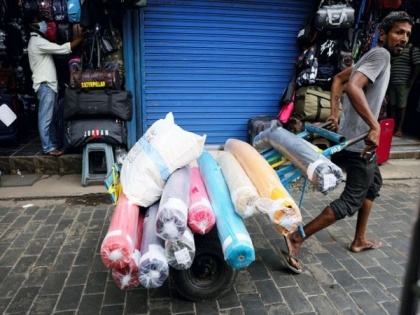Pitfalls of Chinese investments in Sri Lanka
By ANI | Published: February 28, 2023 03:18 PM2023-02-28T15:18:28+5:302023-02-28T20:50:02+5:30
China's attempts to scale its influence in Sri Lanka, a region traditionally considered India's backyard has muddied the waters. ...

Pitfalls of Chinese investments in Sri Lanka
China's attempts to scale its influence in Sri Lanka, a region traditionally considered India's backyard has muddied the waters. One noticeable manifestation of increasing Chinese encroachment can be seen in the domain of foreign investment, reported Combo Gazette.
China's external lending and even private corporation's activities abroad are dictated by political considerations. Its foreign investment has become a tool for buying geopolitical influence with a detrimental impact on the targeted country's fragile democratic machinery as well as the local environment where the Chinese-funded projects are implemented.
With its developing economy graduating to the middle-income country status that deprives it of concessional loans from multilateral bodies, Sri Lanka's financing and infrastructural requirements are crystal clear, reported Colombo Gazette.
The shifting pattern in Sri Lanka's external borrowings has seen China emerging as the largest bilateral creditor. Contrary to the popular perception which places its share at 10 to 15 per cent, Chinese lending accounts for around 20 per cent of Sri Lanka's public external debt.
A briefing paper by Sri Lankan economists highlights that for the period 2008-2021, the effective interest rate on Chinese loans was costlier than the average rates on loans from Japan or multilateral bodies, reported Colombo Gazette.
Moreover, the initial set of Chinese-funded projects has been criticised for neglecting environmental concerns. In Sri Lanka's southern province, agricultural lands and jungles had to make way for Chinese-funded highway and link road projects.
A stretch of the Colombo - Galle - Hambantota - Wellawaya Road or the A2 Highway cuts through the elephant corridor and the Department of Wildlife Conservation estimates that the project area is home to 15-20 per cent of the island nation's elephant population.
The Southern highway has also drawn the ire of locals for making the area more prone to landslides and flooding. Likewise, the port area projects have stoked the fear of coastal erosion and harm to fish population.
Further, opposition party members have pointed to the potential danger of the erosion of
sovereign autonomy due to the overreliance on Chinese financing. However, the Chinese have sought to pin the blame on domestic politics accusing the Sri Lankan government of being opportunist, reported Colombo Gazette.
The Chinese public discourse on Sri Lanka's crisis situation hardly gives the impression of a friendly rising power coming to the rescue of a beleaguered partner. Moreover, it even refused to help Sri Lanka during the recent bout of economic crisis.
For instance, in the case of the ongoing debt restructuring talks, analysts have argued that Chinese concessions to a crisis-riven Sri Lanka is certainly less generous than the terms India has offered in line with the Paris Club recommendations.
China's selfish domestic discourse and unsatisfactory debt restructuring in moments of crisis are indications of China's ineptness at being a responsible actor. The lessons for developing nations on the perils of Chinese investment should be apparent, reported Colombo Gazette.
( With inputs from ANI )
Disclaimer: This post has been auto-published from an agency feed without any modifications to the text and has not been reviewed by an editor
Open in app